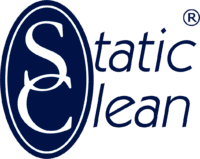Controlled Turbulence in the Clean Room
Most Clean Room experts and consultants cringe at the thought of having turbulence inside of a clean room or clean space even though it is a necessary evil. Compressed air driven ionizing guns and nozzles are indeed a requirement to get rid of particles in the process, on the product itself and worse yet inside of the package. Particles typically show up after heat sealing the lid in place. How do you make a process cleaner and reduce waste without the use of ionizers that use compressed, Clean Dry Air (CDA) or Nitrogen (N2)? The simple answer is that you go with whatever blow-off device is required, but control the turbulence.
What does turbulence have to do with a Clean-room, you might ask? Unlike laminar air flow, turbulent air flow is not channeled in smooth parallel paths but distorted or agitated. Typically this dilutes the contamination but it can also distribute it across the whole clean-room. Wikipedia’s definition of a clean room is this; A cleanroom or clean room is an environment, typically used in manufacturing or scientific research, with a low level of environmental pollutants such as dust, airborne microbes, aerosol particles, and chemical vapors. More accurately, a cleanroom has a controlled level of contamination that is specified by the number of particles per cubic meter at a specified particle size.
The basic problem associated with the use of turbulent air tools is “where do the particles go”? The answer is quite simple; source capture the debris where it is being created. With the right containment equipment in place, the dislodged particles can be drawn into a filter media that greatly reduces the risk of re-contaminating the products just cleaned or dumping the particles on the nearby manufacturing cell. The hotspots where particles are created may be at the molding machines, ultrasonic welding stations, de-burring, assembly, packaging or other points of friction where static is generated.
The best solution for companies dealing with these problems, especially the applications that involve medical packagers is to incorporate an ionizer into the source capturing equipment or use ionizing in conjunction with a means to capture the debris. Static Clean can offer both solutions. If you are using an ionizing air gun to remove particles, it only makes sense to use the Particle Trap® to capture those particles. If the same problems apply and the desire is to take human error out of the equation, the answer is to use a Medical or Parts Cleaning Station that we offer in both manual and automated models. View the details about the Particle Trap® 6000 and our Medical Cleaning Stations-MCS-AS.

